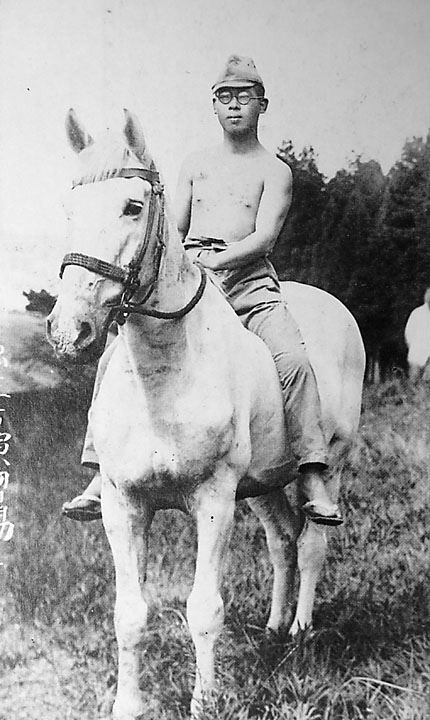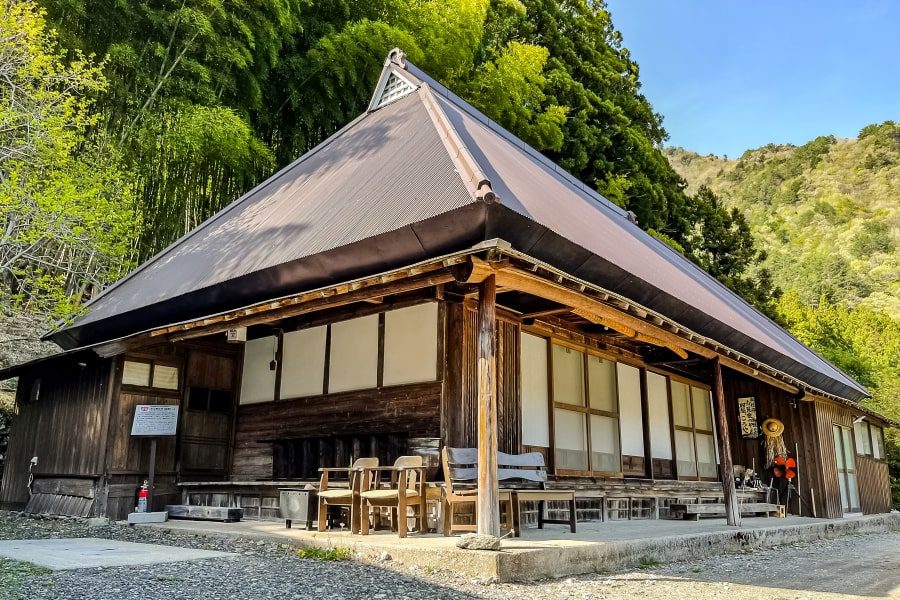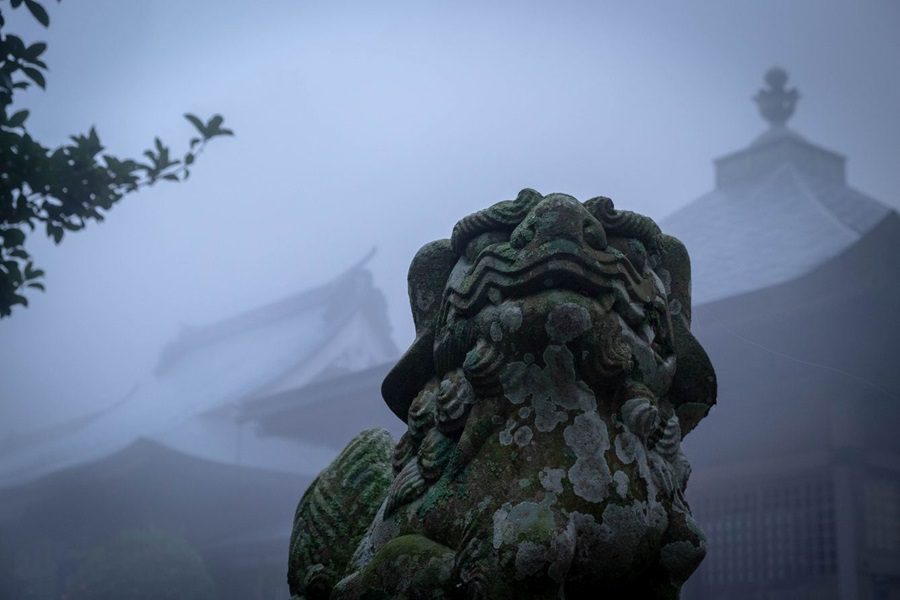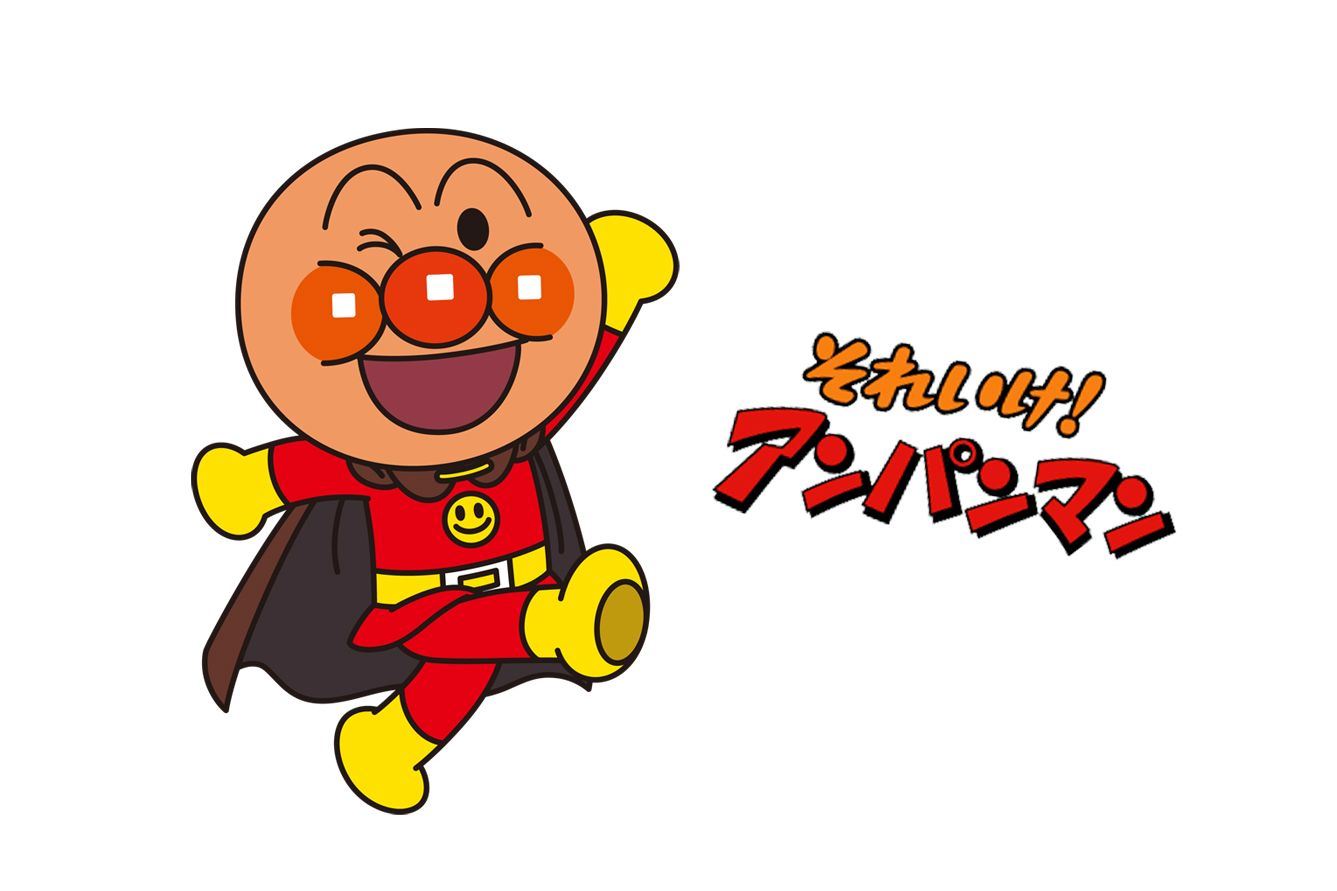Yanase Takashi
Home » Yanase Takashi
Yanase Takashi
Name in Japanese: やなせたかし
Pronunciation: yanase takashi
Dates: 1919 to 2013
Anpanman is an unlikely national hero. His head is made of bread, specifically anpan, a bean-paste bun. Anpan is a staple product of Japanese bakeries, beloved by children and adults alike. It’s very strange that a character with bread for a head should become Japan’s representative superhero. It’s even stranger that this character is almost single-handedly responsible for the moral education of Japan’s children.
According to the creation myth, Anpanman was born in the bakery of a wise and kindly baker, Uncle Jam. A shooting star landed in Uncle Jam’s oven while he was baking an anpan, turning the bread into the superhero we know today. When fighting evil, Anpanman can deliver a remarkably powerful punch and kick. Since his head is food, he never needs to eat or drink. His only weaknesses are getting his head wet or dirty, but it’s not a problem because Uncle Jam can bake him another head. The embodiment of evil in the Anpanman universe is a character called Baikinman, a wicked, narcissistic bacterium. He has a naughty, self-centred female sidekick called Dokin-chan. In each episode, Baikinman devises a new scheme to rid the world of Anpanman and establish a world where bacteria rule. By winning the cooperation of other characters of goodwill through kindness and generosity, Anpanman always succeeds in foiling Baikinman, finally sending him flying with a ferocious an-punch or an-kick.
Creation myths aside, our bready hero was created by Yanase Takashi (1919 to 2013), soldier, poet, designer, cartoonist, and writer. Takashi was born in Tokyo, but his father was from Kami in Kochi prefecture. The family traced its roots back 300 years to the Taira clan. Takashi’s father was a writer and journalist in Shanghai, where Takashi spent some of his youth until his father’s early death. The bereaved family relocated to Kochi city, relying on their father’s relatives. When Takashi’s mother remarried, he was taken in by his uncle who was a doctor in Nankoku city. This uncle was a hobbyist, an interest that had a great influence on the boy. After attending local schools in Kochi, Takashi went to study design at polytechnic in Tokyo. As a child, he loved reading Shonen Club, a boys’ magazine that featured manga.
Takashi graduated from the Design Department of Tokyo College of Industrial Arts, then he joined the advertising department of Tanabe Pharmaceutical. However, in 1941 he was conscripted into the Japanese Army’s 6th Heavy Field Artillery Regiment. Taking advantage of his educational background, he became a non-commissioned officer in charge of encryption.

After training, he went off to the Sino-Japanese War. In addition to the creation and decryption of code, the unit was also involved in pacification efforts, producing propagandistic picture-story shows for the local Chinese. Yanase was based in an area that didn’t see combat and he never fired a gun at the enemy. However, his younger brother was killed in the Pacific theatre. Towards the end of the war when Japanese logistics were stretched to breaking point, his unit was chronically short of food and Yanase dreamed obsessively of eating anpan.
For a while after the end of the war, he worked with his army comrades at a company that collected scrap. But when his interest in painting returned, he joined the magazine department of Kochi Newspaper in 1946, writing, drawing manga, and painting covers. When his female colleague Komatsu Nobu moved to Tokyo, he followed her in 1947 and they married. He joined Mitsukoshi Department Store, and while working as a graphic designer in the advertising department, he began to actively draw manga. In 1953, he left Mitsukoshi to became a full-time cartoonist, since the income he earned from manga was three times the salary at Mitsukoshi. His experience of poverty after the war drove him to seek success as an artist.
At that time, Yanase was drawing short whimsical strips in the genre known as ‘nonsense manga’ and also comics for adults. But in the late 50s, story manga introduced by Tezuka Osamu became popular, and Yanase’s chosen field experienced a steep decade-long decline. During that time, he made a good living producing stage art and in broadcasting.
In the 1960s, Yanase started writing picture books for Sanrio, originally a confectionery company. Anpanman first appeared in a collection of short fairy tales intended for adults. The story took an antithetical view of heroism. In 1973, Yanase launched the magazine Poetry and Fairy Tales. In that year, Anpanman was adapted for children. The work was initially bashed by critics, parents, and educators, but it became extremely popular with young children.
In 1988, the TV animation Soreike! Anpanman was first broadcast on Nippon Television. The company was anxious as there were few sponsors, but it soon became a very popular program. Every child knew the words to its theme song, the Anpanman March. The program led to merchandise which flew off the shelves, and Yanase became a hot property. Anpanman became Japan’s biggest selling character, exceeding even Kitty-chan. The show entered the Guinness Book of Records for the number of supporting characters – over two thousand, including one that pops out of lawns and spits dirty water on drying laundry, much to the distress of housewives and the delight of Baikinman.
Yanase was made president of the Japan Cartoonists Association in 2000, where he worked to establish cartooning as a viable career. He came to believe that as a manga artist, his own behaviour must be interesting from a cartoon perspective. He started to give unique speeches that included songs and dances at meetings and other events, and his fashion was on the eccentric side.
From the late 60s, Yanase suffered from kidney stones, cataracts, heart disease, pancreatitis, hernia, glaucoma, bowel obstruction, kidney cancer, bladder cancer, and pneumonia. In 2011, he intended to retire due to blurred vision. But then the Great East Japan Earthquake struck, and in the aftermath, the Anpanman March became the theme song for reconstruction. Spiritually, Anpanman was working to save the people of Japan, and Yanase came out of retirement to create posters for the disaster areas and a CD about a pine tree that miraculously survived the tsunami.
Yanase joked in public about his ill-health, laughingly assuring his audiences that he was sure to die “sometime next week”. He finally succumbed to heart failure in 2013 at the age of ninety-four. His grave is at the site of his family’s home in Kochi, guarded by stone statues of Anpanman and Baikinman.
Related Tours

Experience the most beautiful and interesting temples of the Shikoku Pilgrimage in seven days.

A tour for families or friends, staying in the most characterful kominka and ryokan of Shikoku.

Visit the most beautiful and interesting temples of the Shikoku Pilgrimage and walk the toughest trails.


